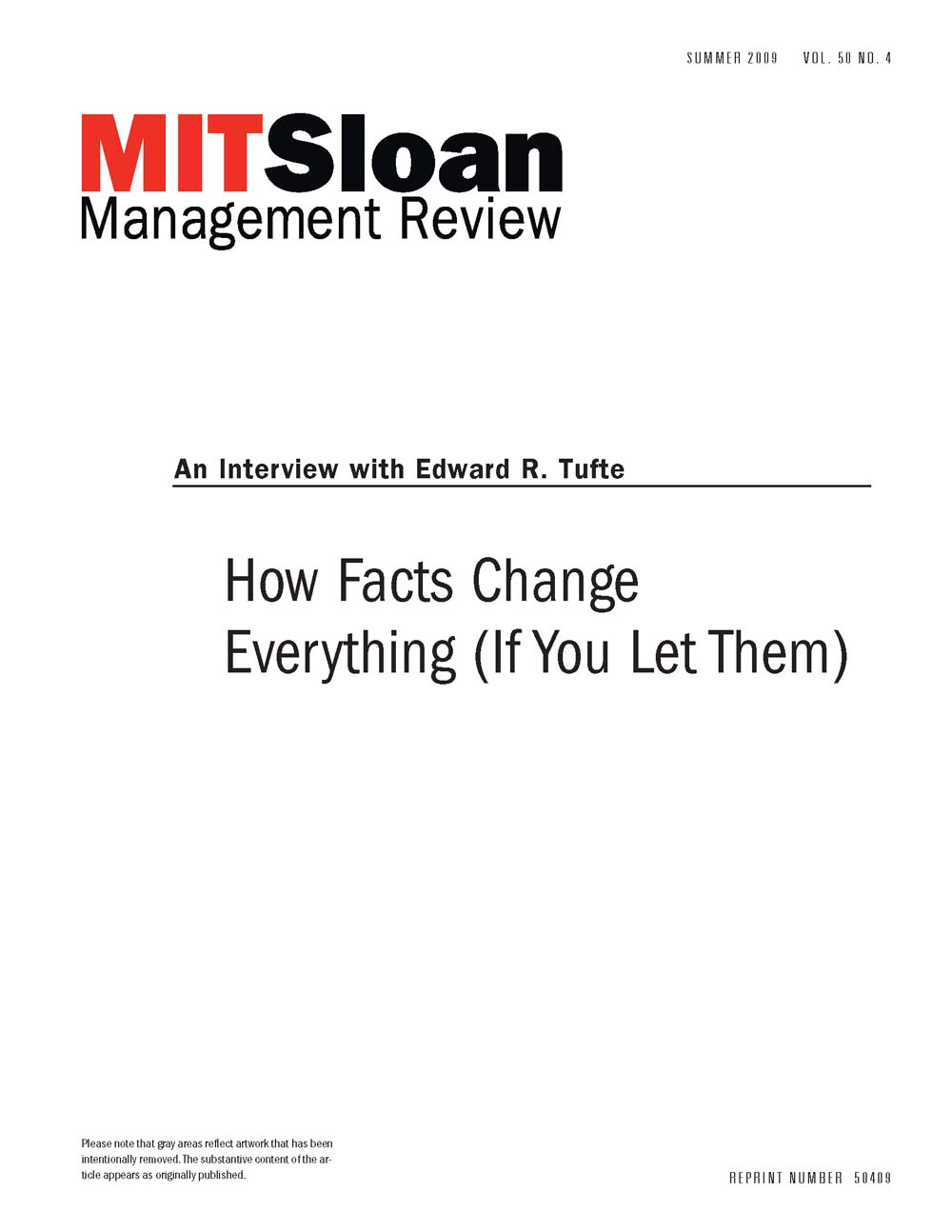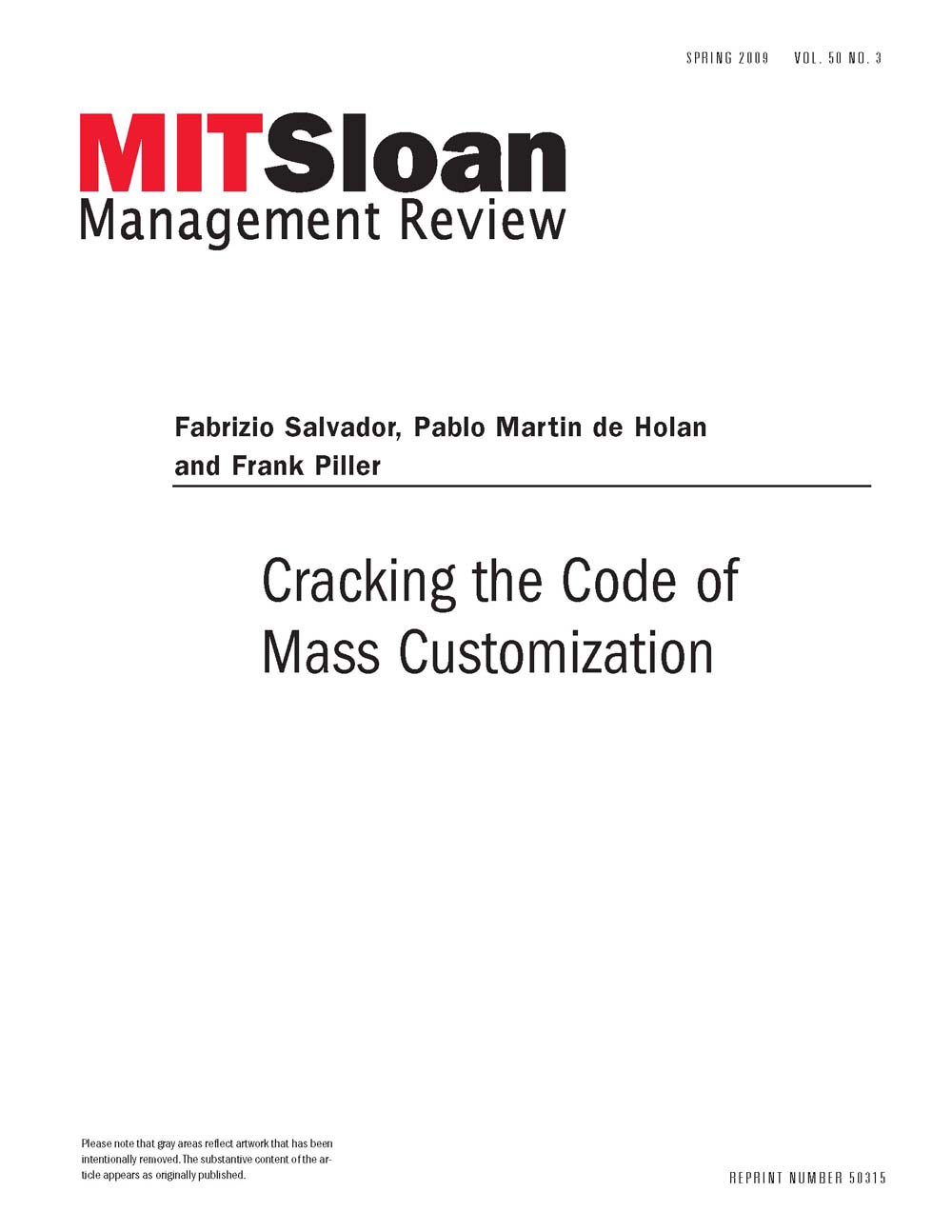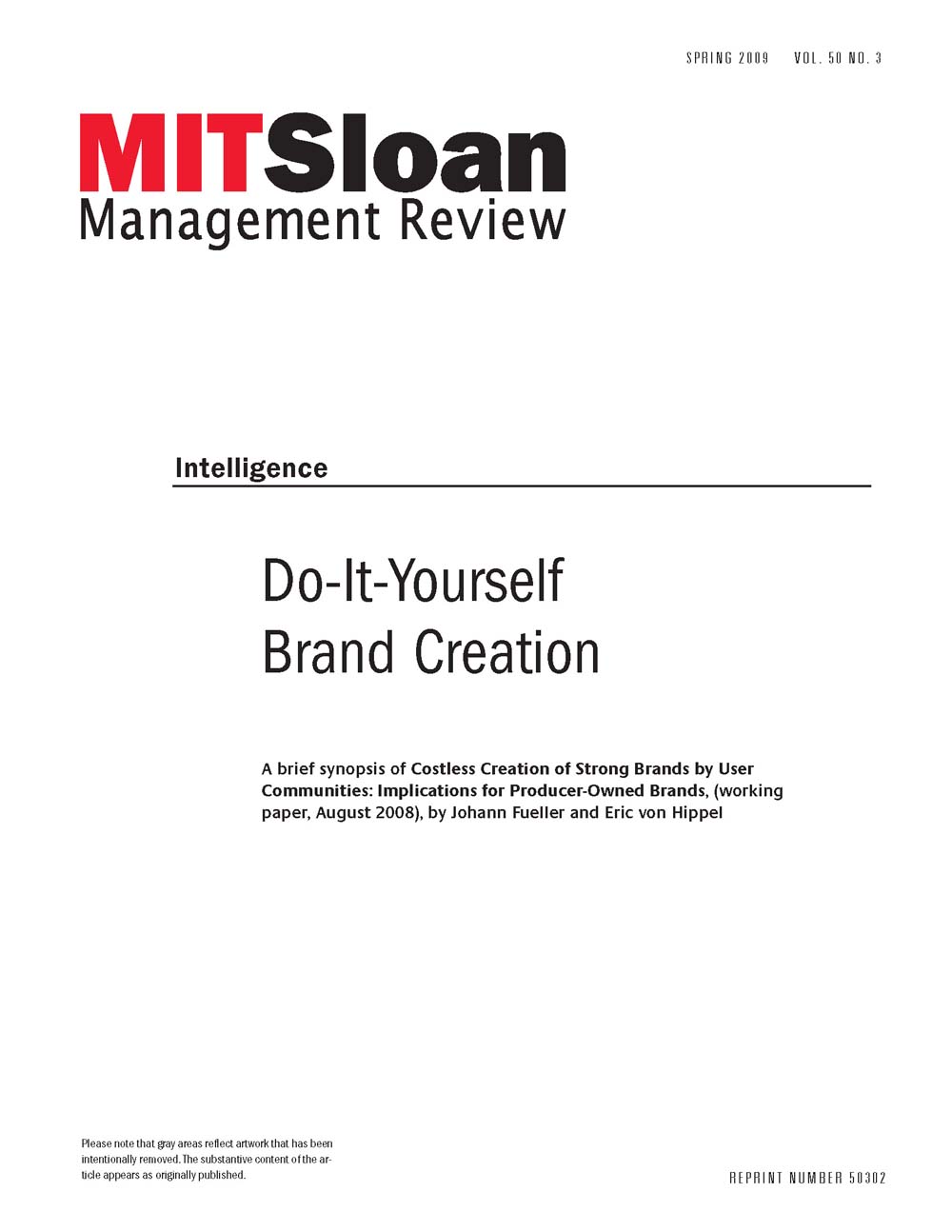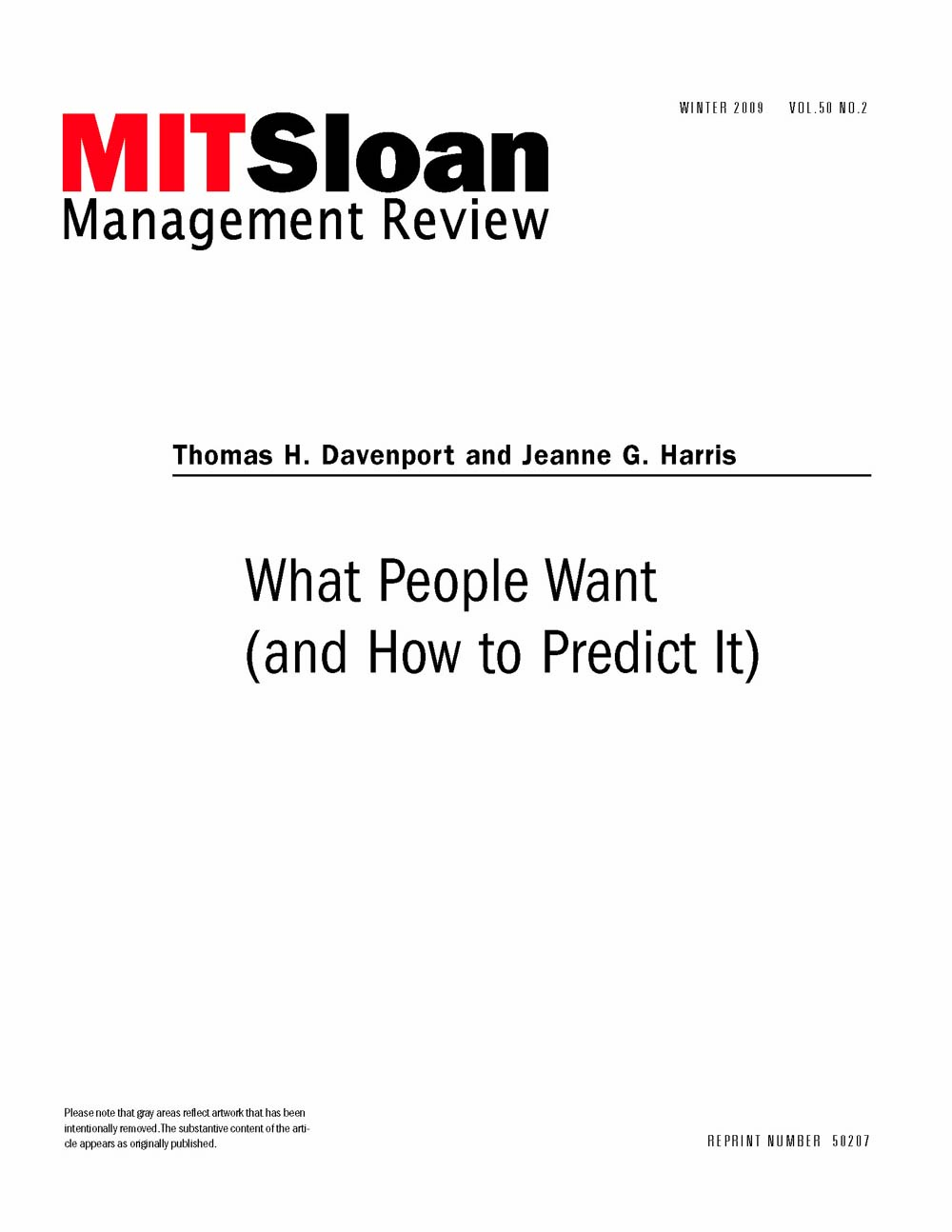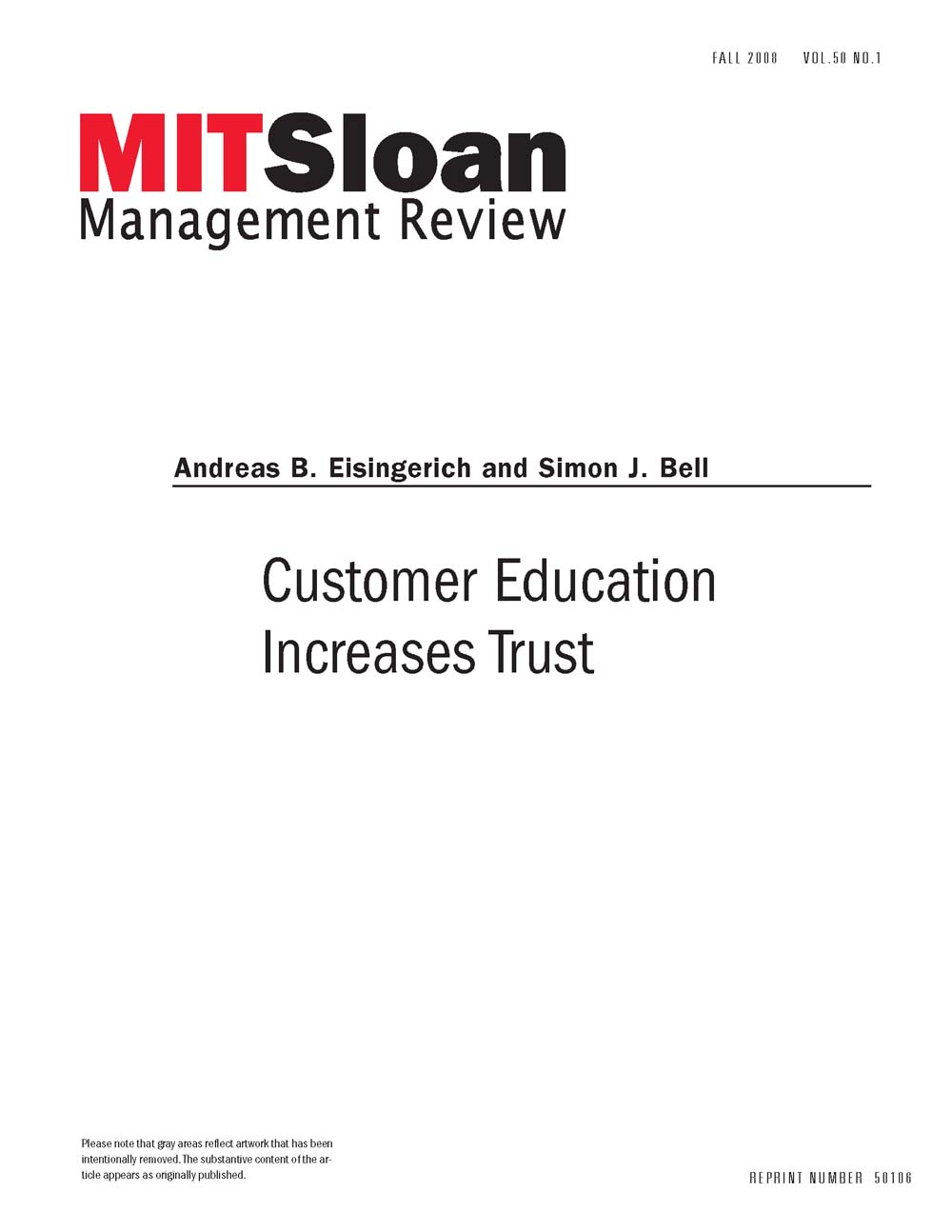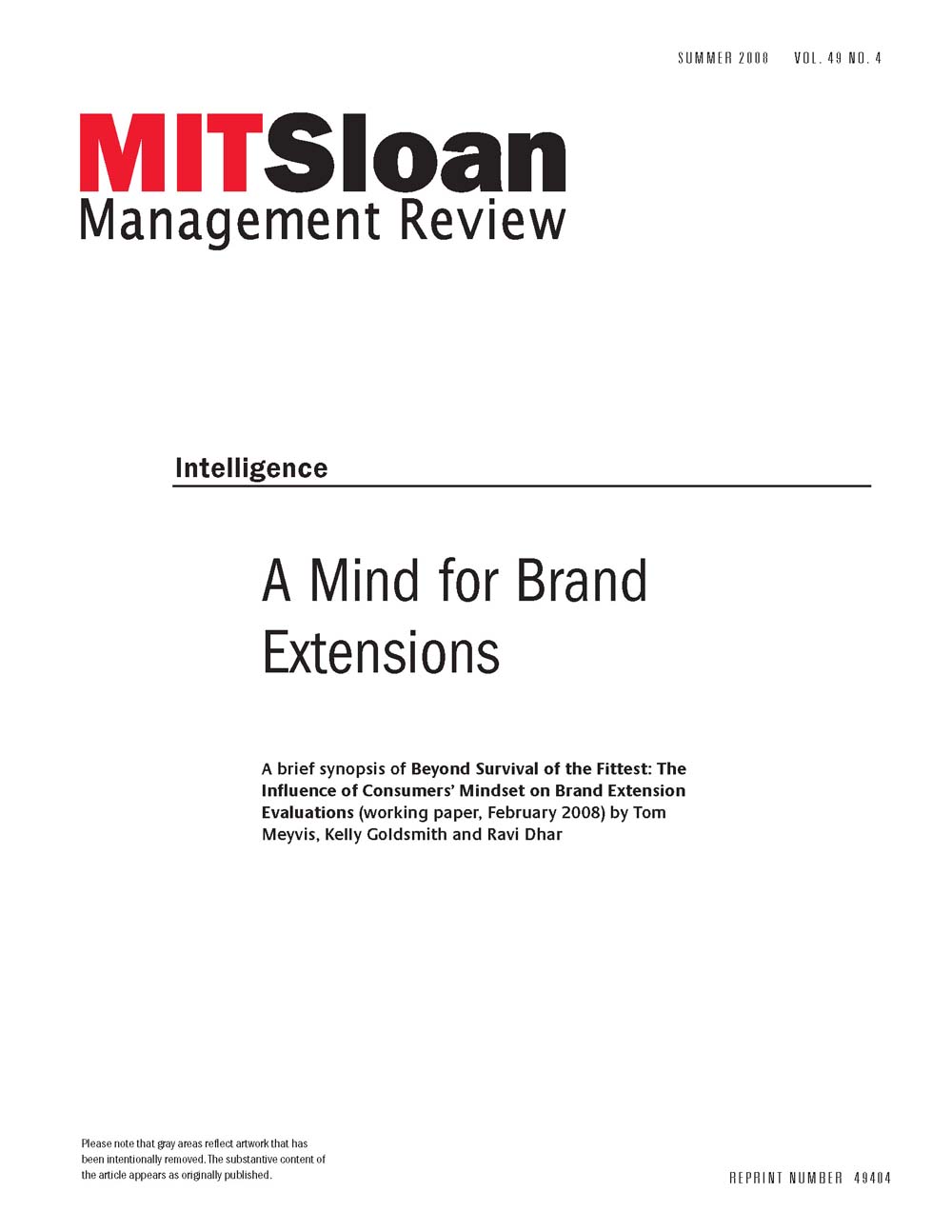Organizations can pick price points that provide both profits and long-term value to suppliers.
Marketing
Page 14 of 23
-
How Facts Change Everything (If You Let Them)
Edward R. Tufte, author of The Visual Display of Quantitative Information and other classics of information visualization, says that businesses would think better, make better decisions and present themselves more powerfully if they would only learn to talk--both among themselves and externally--in facts. To present themselves and their products better and more honestly, Tufte recommends that companies concentrate on delivering facts (rather than pitches), deliver as many of those facts as they can, not count on the marketing department to make it happen, and look to news sites and scientific publications for models of success. In particular, he argues that Google Inc. is where most companies should turn for design inspiration, and Tufte continues his examination of the corrosive influence that he says presentation software has on thought. Following his big ideas about information presentation, he says, will help companies differentiate themselves.
-
Morph the Web To Build Empathy, Trust and Sales
"Web site morphing" means that communicating — and selling — will never be the same.
-
Cracking the Code of Mass Customization
Executives tend to think of mass customization as a fascinating but impractical idea, implemented in only a small number of extreme cases, such as Dell Inc. in the PC market. But over the past decade, the authors have studied mass customization at different organizations, including a survey of more than 200 manufacturing plants in eight countries. From that investigation, they found that mass customization is applicable to most businesses, provided that it is appropriately understood and deployed. The key is to view it fundamentally as a process for aligning an organization with its customers' needs through the development of a set of three organizational capabilities. Those three fundamental capabilities are: (1) the ability to identify the product attributes along which customer needs diverge, (2) the ability to reuse or recombine existing organizational and value chain resources, and (3) the ability to help customers identify or build solutions to their own needs. Admittedly, the development of these capabilities requires organizational changes that are often difficult because of powerful inertial forces in a company, but many obstacles can be overcome by using a variety of tools and approaches, and even small improvements can reap substantial benefits. The trick is to remember that there is no one best way to mass customize: Managers need to tailor their approach in ways that make the most sense for their specific business.
-
Do-It-Yourself Brand Creation
What happens when user communities—connected by the Internet—start to create their own brands?
-
What People Want (and How to Predict It)
Historically, neither the creators nor the distributors of cultural products such as books or movies have used analytics & #8212; data, statistics, predictive modeling & #8212; to determine the likely success of their offerings. Instead, companies relied on the brilliance of tastemakers to predict and shape what people would buy. Creative judgment and expertise will always play a vital role in the creation, shaping and marketing of cultural products. But the balance between art and science is shifting. Today companies have unprecedented access to data and sophisticated technology that allows even the best-known experts to weigh factors and consider evidence that was unobtainable just a few years ago. And with increased cost and risk associated with the creation of cultural products, it has never been more important to get these decisions right. In this article, the authors describe the results of a study of prediction and recommendation efforts for a variety of cultural products. They discuss different approaches used to make predictions, the contexts in which these predictions are applied and the barriers to more extensive use, including the problem of decision making pre-creation. They then discuss two aspects of the prediction market. First, the need for better prediction for distributors of cultural products, and second, the potential for business models around prediction techniques.
-
Customer Education Increases Trust
Service companies shouldn’t worry about teaching their customers too much.
-
Understanding 'Honest Signals' in Business
New technology tools are offering insights into the power of ancient forms of human communication that Pentland calls honest signals. In this excerpt from his new book Honest Signals: How They Shape Our World (MIT Press, October 2008), Pentland describes how he and other researchers have been using a device called a sociometer to gain a new perspective on human behavior. (The sociometer is a wearable badgelike device equipped with sensors; it measures factors such as body movement and the amount of time people spend talking face-to-face.) Studies using data from sociometers show that certain types of subtle social signals affect outcomes significantly in a variety of settings, from business plan presentations to salary negotiations. Pentland focuses on four types of honest signals: influence, mimicry, activity and consistency. Influence, in this context, refers to the degree to which one person’s speech patterns in a conversation influence the other party’s. Mimicry is the extent to which one person copies another’s gestures and movements & #8212; such as head nodding or smiles & #8212; during an interaction. The activity variable reflects humans’ tendency to show increased activity levels when interested, and consistency in speech or movement may be a sign of focus, as well as of less openness to others’ influence. Such social signals are surprisingly powerful. For example, Pentland describes a study conducted by researchers Jeremy Bailenson and Nick Yee at Stanford University, in which students were shown a three-minute video encouraging them to carry their student identification card. Some students were shown a standard animated video, whereas others saw a video in which the animated figure mimicked their gestures four seconds later. Simply adding the mimicry feature caused the sales pitch for the ID card to be 20% more effective. Understanding the power of these nonverbal forms of communication can enable us to better design organizations, Pentland concludes. However, it is an open question whether we will use the new insights this type of research provides for good or for ill. Article 50118. The MIT SMR article was excerpted and adapted from Honest Signals: How They Shape Our World by Alex (Sandy) Pentland, published October 2008 by The MIT Press. Copyright in the name of The Massachusetts Institute of Technology. All rights reserved.
-
A Mind for Brand Extensions
Recent research suggests that consumers' state of mind affects their openness to new products affiliated with existing brands.




